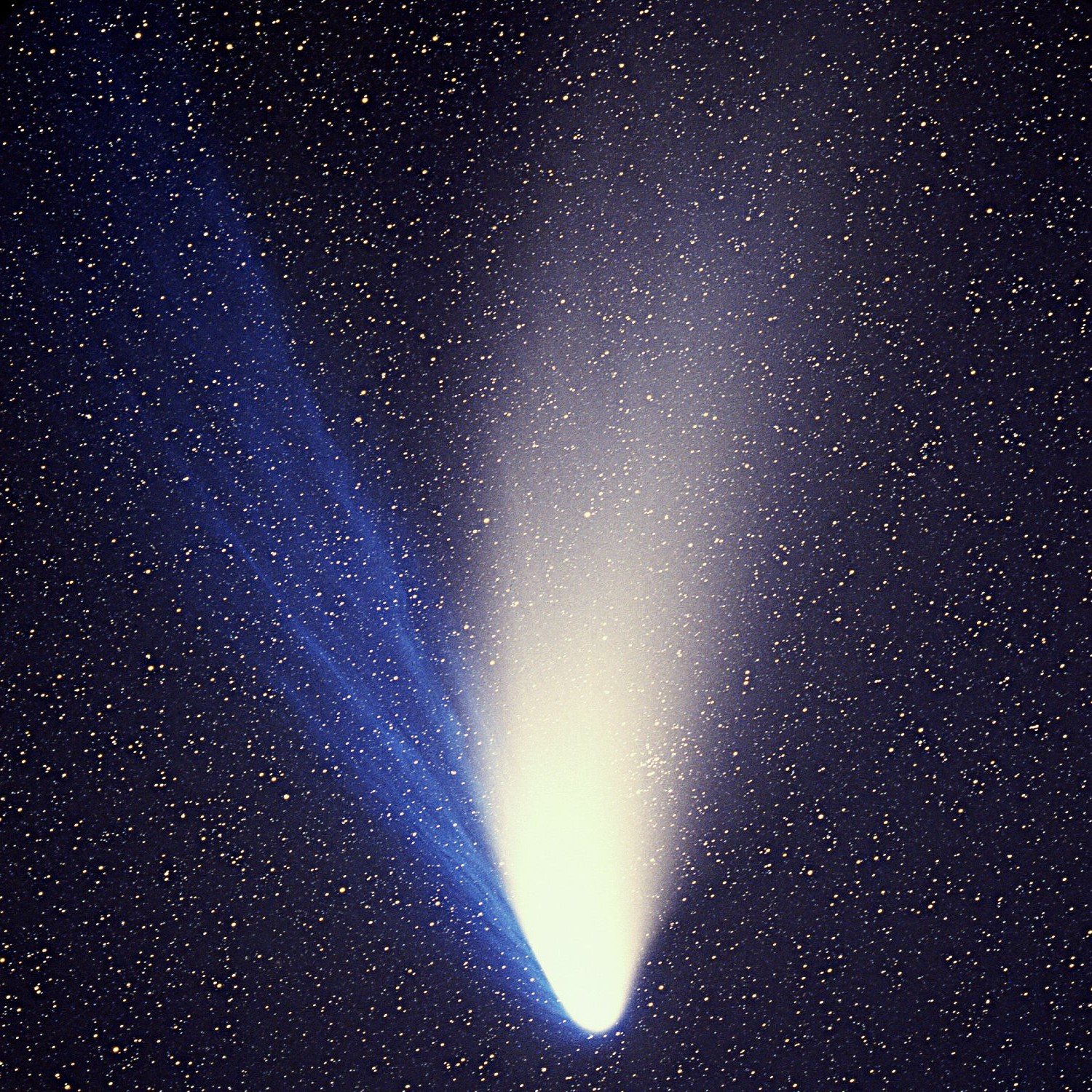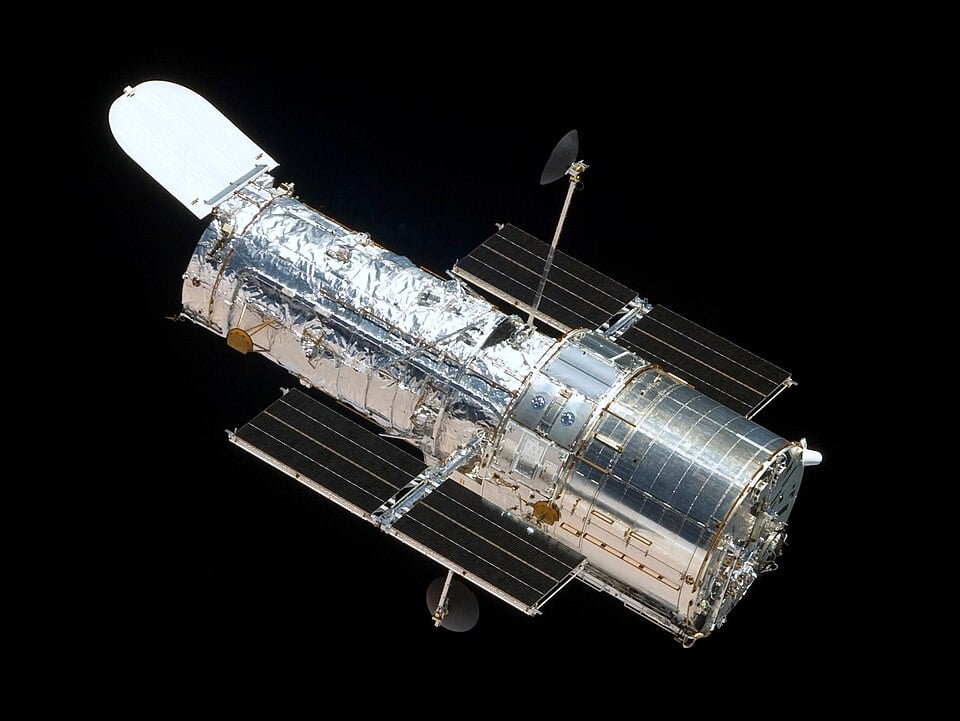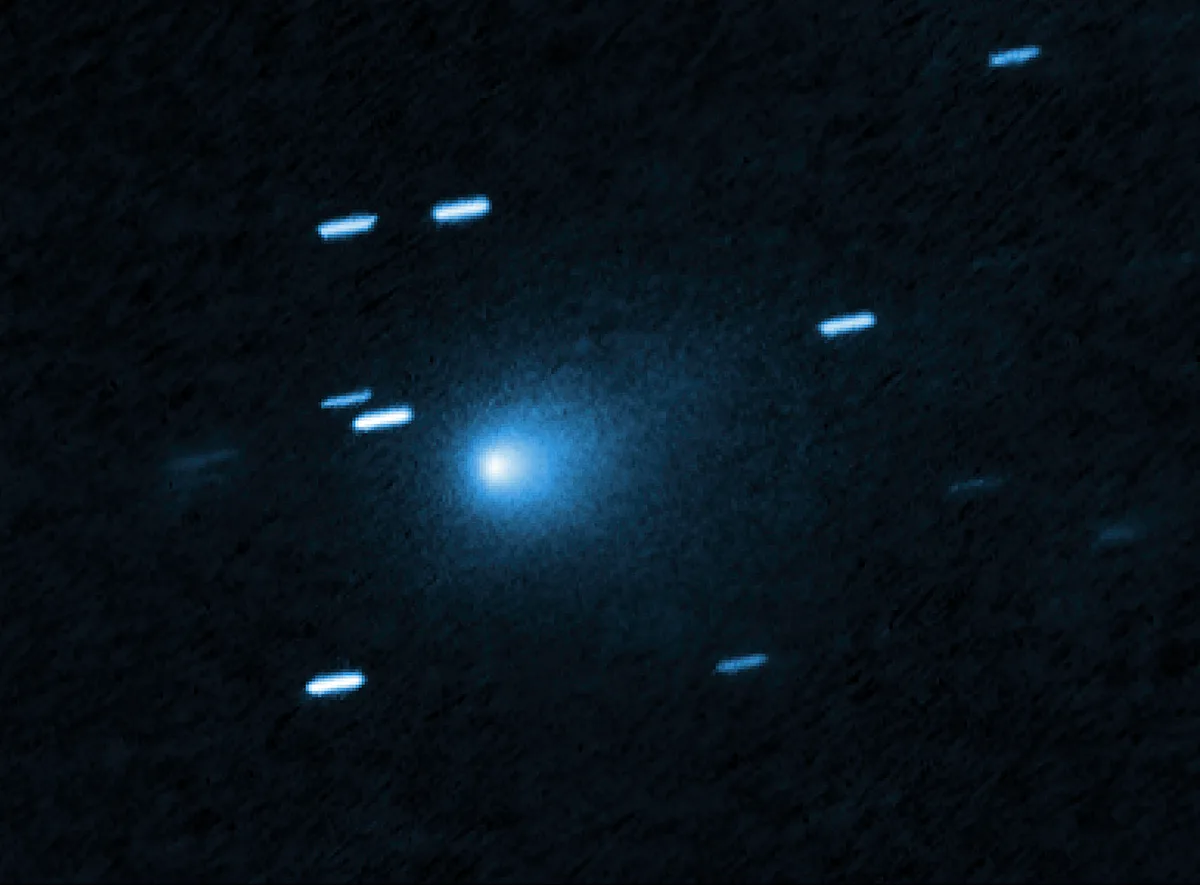Astronomers using the Hubble Space Telescope have observed 3I/ATLAS, only the third known object from outside our Solar System to visit our neighbourhood. This interstellar interloper is putting on quite a show as it approaches the Sun, revealing secrets about visitors from the depths of space.
3I/ATLAS is clearly active at 3.8 astronomical units as it approaches the Sun, showing dust emitted from the hot Sun facing side of the nucleus and a weak, radiation pressure swept tail away from the Sun. To put this in perspective, 3.8 astronomical units means the object is nearly four times farther from the Sun than Earth is. Even at this great distance, the Sun’s energy is already causing dramatic changes to this mysterious visitor.
3I/ATLAS was discovered in a starry region of the sky. The discovery image by ATLAS is shown in the inset image, which is a zoomed in view of the location where 3I/ATLAS was discovered (red box) (Credit : ATLAS/University of Hawaii/NASA)
Unlike asteroids, which remain largely unchanged as they orbit, 3I/ATLAS is behaving more like a comet. As solar radiation heats its surface, the object is releasing streams of dust particles that form a distinctive tail pointing away from the Sun. This activity provides astronomers with a rare opportunity to study material that originated in another star system entirely.
 Comets in our Solar System are a familiar sight. An image of comet C/1995 O1 (Hale-Bopp), taken on April 04, 1997 with a 225mm f/2.0 Schmidt Camera (focal length 450mm) on Kodak Panther 400 color slide film with an exposure time of 10 minutes; the field shown is about 6.5°x6.5°; at full resolution, the stars in the image appear slightly elongated, as the camera tracked the comet during the exposure (Credit : E. Kolmhofer, H. Raab; Johannes-Kepler-Observatory)
Comets in our Solar System are a familiar sight. An image of comet C/1995 O1 (Hale-Bopp), taken on April 04, 1997 with a 225mm f/2.0 Schmidt Camera (focal length 450mm) on Kodak Panther 400 color slide film with an exposure time of 10 minutes; the field shown is about 6.5°x6.5°; at full resolution, the stars in the image appear slightly elongated, as the camera tracked the comet during the exposure (Credit : E. Kolmhofer, H. Raab; Johannes-Kepler-Observatory)
Using Hubble’s exceptional resolution, the researchers led by David Jewitt from UCLA, were able to estimate how much material 3I/ATLAS is losing as it heats up. They calculated the mass loss rate in dust as 6 to 60 kg/s, depending on the size of the dust particles being ejected. That’s roughly equivalent to losing the mass of a small car every few minutes, a significant amount for such a distant, small object.
The team also worked to determine the size of 3I/ATLAS itself, though this proved challenging since they can only see the glowing cloud of dust surrounding it, not the solid nucleus directly. By analyzing the brightness distribution of the surrounding coma, they estimated the nucleus has an effective radius of less than 2.8 kilometers, assuming it reflects only 4% of the light that hits it (similar to charcoal).
 The Hubble Space Telescope as seen from the departing Space Shuttle Atlantis, flying STS-125, HST Servicing Mission 4 (Credit : NASA)
The Hubble Space Telescope as seen from the departing Space Shuttle Atlantis, flying STS-125, HST Servicing Mission 4 (Credit : NASA)
One of the most intriguing aspects of studying interstellar objects is understanding what they’re made of and where they came from. The researchers found that if the activity is driven by carbon monoxide sublimation (turning from solid to gas), the nucleus cannot be smaller than 0.16 km in radius, and must be larger if less volatile molecules are responsible for the outgassing.
This size constraint is crucial because it helps us understand the object’s composition and history. Different materials require different amounts of solar heating to begin sublimating, so by observing when and how vigorously 3I/ATLAS becomes active, it’s possible to make educated guesses about what it’s made of.
Interstellar visitors like 3I/ATLAS are extraordinarily rare. Before this object, only two others have been confirmed; ‘Oumuamua in 2017 and Borisov in 2019. Each provides a unique window into planetary systems around other stars, carrying with them the chemical signatures and physical characteristics shaped by alien environments billions of kilometres away.
These Hubble observations of 3I/ATLAS represent a significant step forward in our ability to study these cosmic messengers, offering insights into both the object itself and the distant stellar system that sent it on its journey through the Galaxy.
Source : Hubble Space Telescope Observations of the Interstellar Interloper 3I/ATLAS
